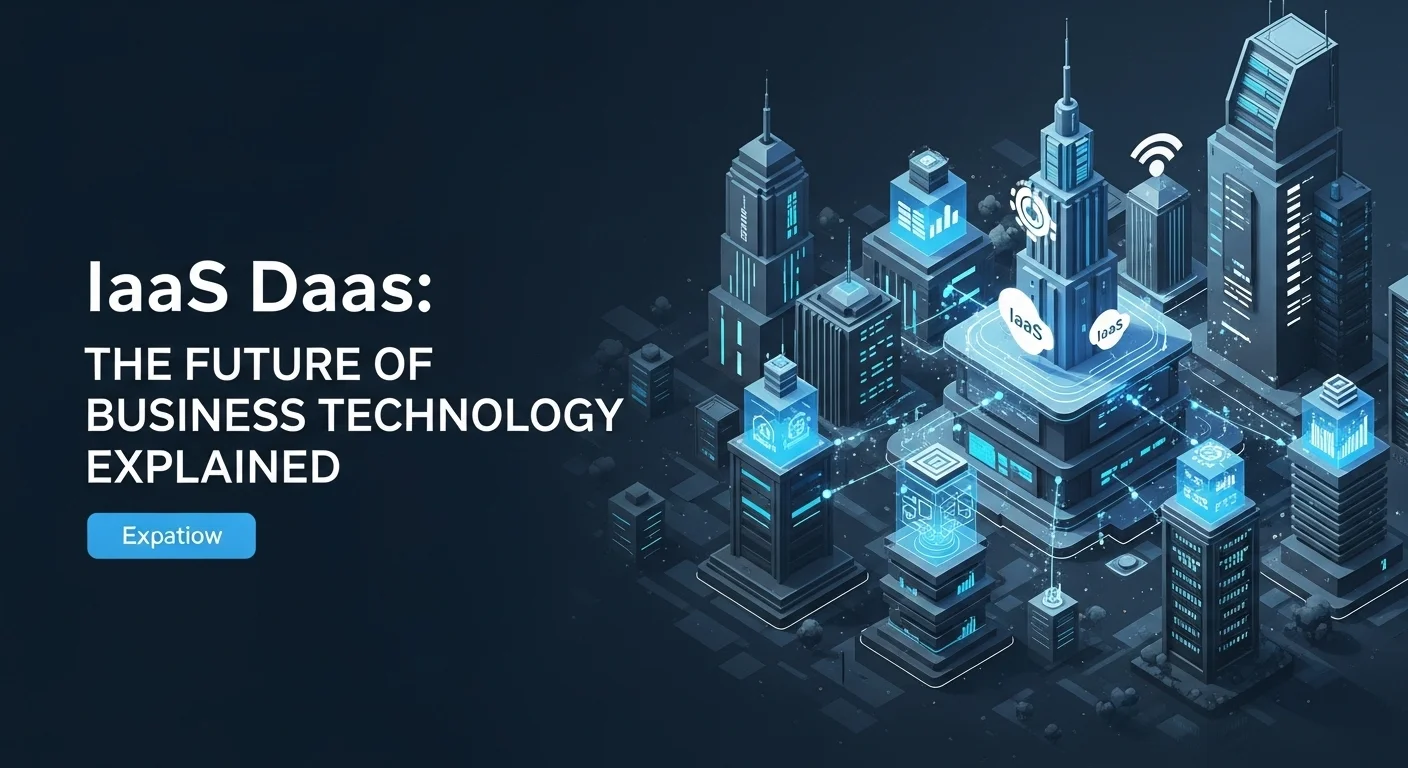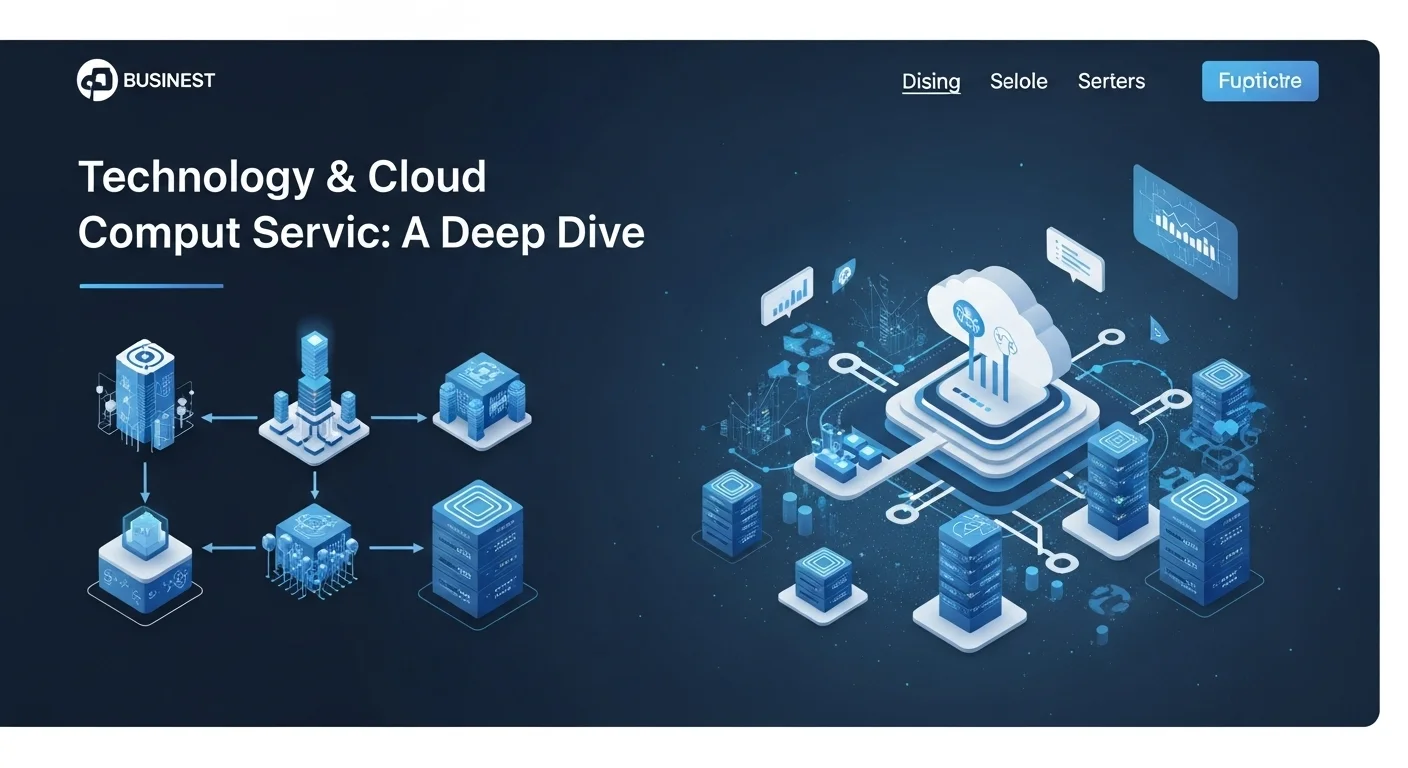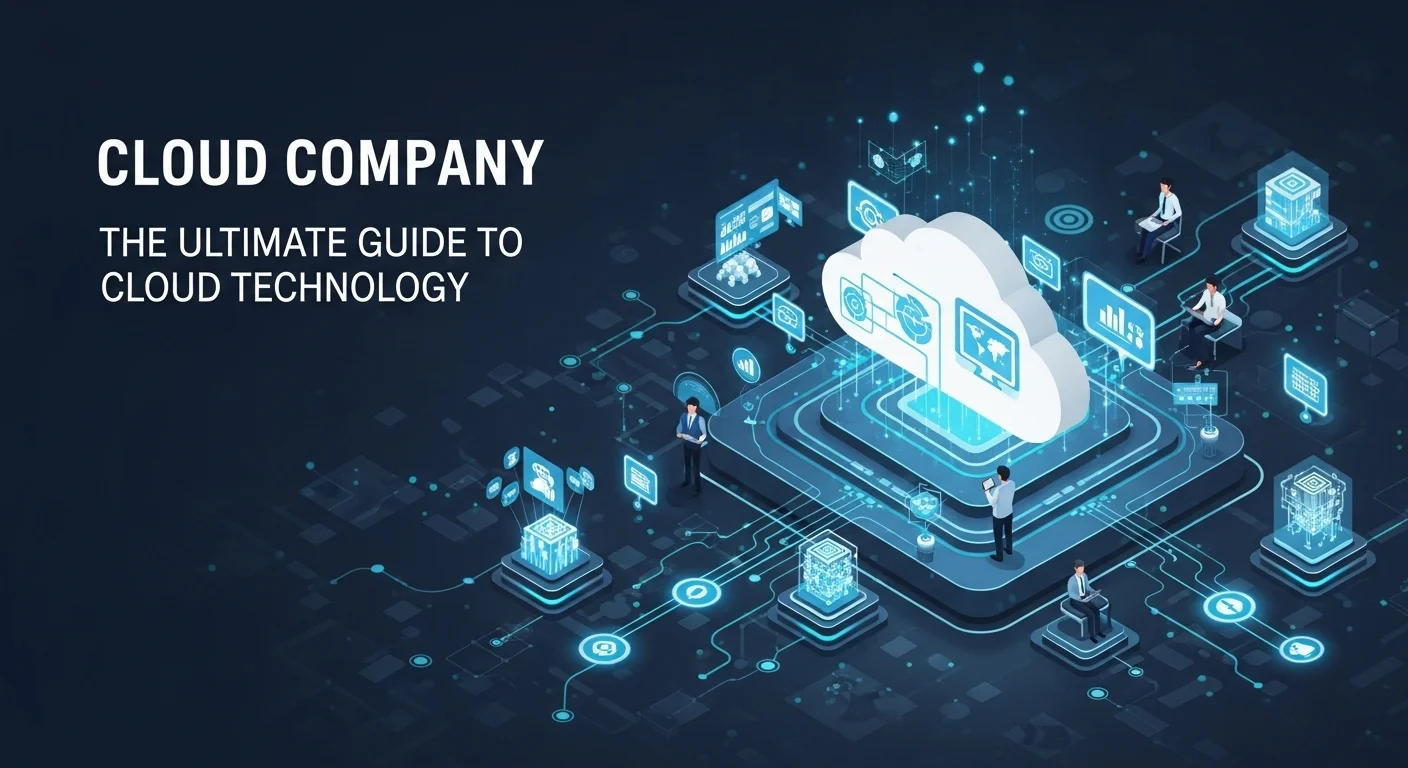Iaas Daas: The Future of Business Technology Explained

Executive Summary
In the rapidly evolving landscape of cloud computing, Infrastructure as a Service (IaaS) and Desktop as a Service (DaaS) are emerging as cornerstone technologies for modern businesses. IaaS provides the fundamental building blocks of computing infrastructure—servers, storage, and networking—on demand, offering unparalleled flexibility and scalability. DaaS, in turn, leverages this infrastructure to deliver virtual desktops to users anywhere, on any device. This article delves into the synergistic relationship between IaaS and DaaS, explaining how they function together to create agile, secure, and cost-effective IT environments. We will explore their individual components, their combined importance for enabling remote workforces and ensuring business continuity, and how they fit into the broader cloud ecosystem. For tech enthusiasts and business leaders alike, understanding the 'IaaS DaaS' model is no longer optional; it's essential for navigating the future of digital transformation and harnessing the full potential of cloud technology to drive innovation and efficiency. This comprehensive guide will illuminate the path forward in the cloud-first era.
Table of Contents
What is Iaas Daas and why is it important in Technology?
The world of digital technology is awash with acronyms, each representing a layer of service or a new paradigm in how we compute, store, and access data. Among the most critical for modern enterprises are IaaS (Infrastructure as a Service) and DaaS (Desktop as a Service). While they represent different layers of the cloud computing stack, their combination, often referred to as 'IaaS DaaS,' creates a powerful synergy that is reshaping IT infrastructure and end-user computing. To truly grasp its significance, we must first deconstruct each component and then understand how they powerfully intersect within the broader context of cloud services.
Understanding IaaS: The Foundation of the Cloud
Infrastructure as a Service (IaaS) is one of the three primary models of cloud computing, alongside Platform as a Service (PaaS) and Software as a Service (SaaS). IaaS provides the fundamental, raw ingredients of IT infrastructure over the internet. [6, 8] Think of it as leasing a plot of land and having access to all the necessary utilities like water and electricity. You have the freedom to build any kind of house you want on that land. In the digital realm, IaaS providers like Amazon Web Services (AWS), Microsoft Azure, and Google Cloud Platform (GCP) offer virtualized computing resources. [6] These resources include:
- Virtual Servers (Compute): Users can spin up virtual machines (VMs) on demand, choosing the specific amount of CPU, RAM, and processing power they need. This eliminates the need to purchase and maintain physical servers in a data center.
- Storage: IaaS offers various types of storage, such as object storage for large amounts of unstructured data and block storage for high-performance databases, all available on a pay-as-you-go basis.
- Networking: This includes virtual networks, load balancers, and IP addresses, allowing users to build complex and secure network architectures in the cloud. [34]
The primary advantage of IaaS is its flexibility and control. [7] IT teams have granular control over their infrastructure, allowing them to customize operating systems, security configurations, and software stacks to meet precise requirements. [7] This model shifts capital expenditures (CapEx) on hardware to operational expenditures (OpEx), providing significant cost savings and agility. [23] Businesses can scale resources up or down almost instantly in response to demand, a feat that is slow and expensive with on-premises hardware. [7]
Defining DaaS: The Modern Workspace Delivered
Desktop as a Service (DaaS) is a cloud computing offering that provides users with a complete virtual desktop environment, streamed over the internet to their personal device, be it a laptop, tablet, or thin client. [19] The DaaS provider manages the entire backend infrastructure, including the virtual machines, operating systems, applications, and data storage. [19] From the user's perspective, they simply log in and are presented with their familiar desktop, complete with all their files and software, regardless of their physical location. [22] Conceptually, DaaS is a specialized form of Software as a Service (SaaS), but instead of delivering a single application, it delivers an entire desktop experience. [9] This distinction is crucial when evaluating the full spectrum of cloud services, often summarized as paas saas iaas daas. [23] DaaS offers several compelling benefits:
- Enhanced Mobility and Flexibility: Employees can access their work desktop from anywhere with an internet connection, fostering remote and hybrid work models. [7]
- Improved Security: Data is not stored on the end-user's device. Instead, it resides securely within the cloud provider's data center. This centralization simplifies security management, patching, and compliance.
- Centralized Management: IT administrators can provision, update, and de-provision desktops from a single console, drastically reducing the time spent on managing individual physical machines. [24]
- Business Continuity: In the event of a disaster or device failure, users can quickly resume work from another device, as their desktop environment is safely hosted in the cloud.
The Symbiotic Relationship: How IaaS Enables DaaS
The term 'IaaS DaaS' refers to the fundamental relationship where DaaS solutions are built and run on top of IaaS platforms. [16] A DaaS provider, or even a large enterprise managing its own virtual desktop solution, will use an IaaS provider like AWS or Azure as the foundational layer. They provision the necessary virtual servers, storage, and networking from the IaaS provider to host the virtual desktop infrastructure (VDI) that powers the DaaS offering. This is where the true power of the model becomes apparent. The scalability and global presence of major IaaS providers mean that a DaaS solution can be deployed to serve a global workforce with high performance and low latency. If a company needs to add 500 new virtual desktops for a new project, the underlying IaaS can scale automatically to meet that demand. This deep integration is a critical consideration in any comprehensive saas iaas paas daas strategy. [6] Businesses must understand that while they might subscribe to a DaaS service, that service itself is a consumer of IaaS resources. This relationship underscores the layered nature of cloud computing, where higher-level services abstract the complexity of the layers beneath them. A holistic view of the iaas paas saas daas stack reveals a progression from raw infrastructure to fully managed applications, with DaaS occupying a unique and powerful position. [9] For instance, a company might use IaaS for its custom backend applications, PaaS for its development teams, SaaS for CRM, and DaaS for its general workforce, creating a tailored cloud ecosystem. The strategic alignment of paas iaas saas daas services is what allows organizations to optimize for cost, agility, and innovation simultaneously. [23] Ultimately, the importance of the IaaS DaaS model in modern technology cannot be overstated. It directly addresses the most pressing needs of today's businesses: supporting a distributed workforce, enhancing security in an era of increasing cyber threats, and maintaining the agility required to compete in a fast-paced digital economy. By combining the foundational power of IaaS with the end-user empowerment of DaaS, organizations can build a resilient, scalable, and future-proof IT environment. Understanding the dynamics of daas paas saas iaas is the first step toward architecting such a forward-thinking technological framework. [22] This integrated approach allows businesses to move away from the constraints of physical hardware and embrace a more flexible, service-oriented model for both their infrastructure and their employee-facing technology, paving the way for sustained growth and innovation.

Complete guide to Iaas Daas in Technology and Business Solutions
Navigating the world of cloud services requires more than just knowing the definitions; it demands a deep understanding of the technical methods, business strategies, and comparative advantages of each model. The 'IaaS DaaS' combination, representing the synergy between Infrastructure as a Service and Desktop as a Service, offers a powerful solution for modern enterprises. This guide provides a comprehensive look at the technical architecture, business implementation techniques, available resources, and critical comparisons to help you master this transformative technology.
Technical Architecture: Building DaaS on an IaaS Foundation
At its core, a DaaS deployment is a sophisticated virtual desktop infrastructure (VDI) hosted on an IaaS platform. Understanding this architecture is key to a successful implementation. The primary components include:
- IaaS Provider: This is the bedrock. Choosing a provider like AWS, Azure, or GCP is the first step. The decision often depends on existing technology stacks, regional presence, and specific service offerings.
- Virtual Machines (Instances): These are the workhorses that run the virtual desktops. The IaaS platform allows for precise configuration of CPU, RAM, and GPU resources for each VM. For DaaS, this means you can create different 'gold images' or templates for various user profiles—a standard desktop for administrative staff, a high-performance one with dedicated GPU for engineers or designers.
- Storage Solutions: IaaS offers different storage tiers. For DaaS, this is critical. User profiles and data might be stored on persistent block storage (like Amazon EBS or Azure Disk Storage) to ensure a consistent experience every time a user logs in (persistent DaaS). Alternatively, for call centers or task-based roles, non-persistent desktops can be used, where the desktop reverts to a clean state after each session, with user data potentially saved to a separate network file share.
- Networking and Security: The IaaS platform's virtual private cloud (VPC) capabilities are used to create a secure, isolated network for the DaaS environment. This involves setting up subnets, routing tables, and network access control lists (ACLs). Security groups or firewalls are configured to control traffic to and from the virtual desktops, ensuring that only authorized users and services can connect.
- Connection Broker: This is the traffic cop of the DaaS solution. It's a server (or a cluster of servers) that authenticates users, checks their entitlements, and directs their connection request to an available virtual desktop in the pool. Major DaaS providers like Citrix and VMware offer advanced connection broker services that can be deployed on any major IaaS platform.
- Gateway Services: To provide secure access from the public internet, a gateway service is used. This service typically encrypts the connection and acts as a single, secure entry point into the virtual desktop environment, protecting the backend infrastructure from direct exposure.
The implementation of this architecture requires a clear understanding of how these components interact. A business must analyze its user segments, application requirements, and security policies to design the right configuration. This holistic planning is essential when considering the entire cloud stack, often represented by the keyword phrase iaas paas saas daas, as each service layer has implications for the others. [6, 9]
Business Techniques for Successful IaaS DaaS Adoption
Deploying an IaaS DaaS solution is not just a technical project; it's a strategic business initiative. The following techniques are crucial for success:
- Conduct a Thorough User Assessment: Before writing a single line of code or provisioning a VM, you must understand your users. Segment them into personas based on their roles, applications used, performance requirements, and mobility needs. This will inform the design of your desktop images and resource allocation.
- Develop a Phased Migration Plan: A 'big bang' approach is rarely successful. Start with a pilot group of users from different departments. This allows you to test the solution, gather feedback, and resolve issues before a full-scale rollout. A phased approach helps manage change and builds momentum.
- Focus on the User Experience (UX): The success of a DaaS project hinges on user adoption. The virtual desktop must be as fast and responsive as a physical one. This involves minimizing latency by choosing the right IaaS region, optimizing network paths, and ensuring applications perform well in a virtualized environment.
- Implement a Robust Security Framework: While DaaS centralizes security, it also creates a high-value target. Implement a Zero Trust security model, which assumes no user or device is trusted by default. Use multi-factor authentication (MFA), endpoint security on the user's device, and continuous monitoring of the DaaS environment. This is a critical part of any saas iaas paas daas strategy, as security must be cohesive across all cloud services. [22]
- Manage Costs Proactively: The pay-as-you-go nature of IaaS can be a double-edged sword. Without proper governance, costs can spiral. Use cost management tools provided by the IaaS vendor, set budgets and alerts, right-size VMs, and shut down desktops that are not in use to optimize spending.
Comparisons: DaaS vs. Traditional VDI and Physical Desktops
To appreciate the value of an IaaS DaaS model, it's helpful to compare it with alternatives:
- DaaS vs. On-Premises VDI: Traditional VDI requires a company to purchase, build, and manage its own servers, storage, and networking hardware in its own data center. [27] This involves significant upfront capital investment, long procurement cycles, and a dedicated IT team for maintenance. DaaS, built on IaaS, converts this to an operational expense, eliminates the hardware management burden, and provides superior scalability. [27]
- DaaS vs. Physical Desktops: Managing a fleet of physical laptops and desktops is a logistical nightmare. It involves manual provisioning, patching, security enforcement on each device, and difficulties in data recovery if a device is lost or stolen. DaaS centralizes all of these tasks, dramatically simplifying IT management and enhancing data security.
When businesses evaluate their options, they often look at the entire service landscape. The discussion of paas saas iaas daas becomes a strategic conversation about what to build, what to buy, and what to rent. [23] Similarly, comparing daas paas saas iaas helps a company decide where to place its resources for maximum impact. [22] For example, a software company might use PaaS for its core product development, but DaaS for its sales and support teams, all running on a common IaaS backbone. This integrated approach, considering the full paas iaas saas daas ecosystem, is the hallmark of a mature cloud strategy. By leveraging the right service for the right workload, businesses can unlock unprecedented levels of efficiency and innovation.

Tips and strategies for Iaas Daas to improve your Technology experience
Adopting an Infrastructure as a Service (IaaS) and Desktop as a Service (DaaS) model is a significant step towards modernizing a company's IT landscape. However, the journey doesn't end with implementation. To truly maximize the benefits and deliver a superior technology experience for both end-users and administrators, businesses must focus on continuous optimization, robust security, and strategic governance. Here are essential tips and strategies to enhance your IaaS DaaS environment.
1. Prioritize Performance and User Experience (UX)
A DaaS solution is only as good as the experience it provides to its users. Sluggish performance or high latency can kill productivity and lead to user frustration. To ensure a seamless experience:
- Optimize Network Connectivity: Latency is the enemy of DaaS. Choose an IaaS region that is geographically closest to the majority of your users to minimize round-trip time. For a globally distributed workforce, consider using the IaaS provider's global network backbone and direct connect services to establish private, high-speed links to the cloud.
- Right-Size Your Virtual Desktops: Don't take a one-size-fits-all approach. Profile your users and their application workloads to create tailored virtual desktop specifications. Power users, like engineers using CAD software, will need more CPU and GPU resources than administrative staff who primarily use office applications. Continuously monitor utilization and adjust resources to avoid over-provisioning (which wastes money) or under-provisioning (which harms performance).
- Choose the Right Protocol: DaaS solutions use display protocols like Citrix HDX, VMware Blast Extreme, or Microsoft RDP to transmit the desktop image. These protocols have different strengths. Test and configure them to optimize for your specific use cases, whether it's high-definition video streaming, real-time collaboration, or standard office work.
2. Implement a Multi-Layered Security Strategy
Centralizing desktops in the cloud enhances security, but it also requires a dedicated security posture. A breach in a DaaS environment can be catastrophic.
- Embrace Zero Trust Principles: Never trust, always verify. Every access request should be authenticated and authorized, regardless of where it originates. Implement strong Multi-Factor Authentication (MFA) as a baseline for all users.
- Secure the Endpoint: Even though data doesn't reside on the end-user's device, a compromised endpoint can still be used to gain access to the virtual desktop. Ensure that all devices connecting to the DaaS environment have up-to-date antivirus software, firewalls, and OS patches.
- Isolate and Segment: Use the networking capabilities of your IaaS provider to segment your DaaS environment. For example, create separate virtual networks for different user groups (e.g., finance, HR, development) to limit the lateral movement of an attacker in case of a breach. This is a crucial practice within the broader iaas paas saas daas framework, ensuring that a compromise in one service area does not cascade to others. [9]
- Monitor and Audit Continuously: Use cloud-native security tools and third-party solutions to monitor for suspicious activity, unauthorized access, and policy violations. Regular auditing of access logs and configurations is essential for maintaining a secure posture.
3. Master Cost Management and Governance
The flexibility of IaaS can lead to unpredictable costs if not managed carefully. A strong governance framework is essential.
- Leverage Cost Management Tools: All major IaaS providers offer tools for tracking spending, setting budgets, and forecasting costs. Use these tools to gain visibility into your DaaS-related expenses. Tag resources meticulously to attribute costs to specific departments or projects.
- Automate Shutdowns: Don't pay for resources you aren't using. Implement scripts or policies to automatically shut down or de-allocate virtual desktops during non-working hours, on weekends, or for inactive users. Even small savings per desktop can add up to a significant amount across the organization.
- Utilize Reserved Instances: For predictable, long-term workloads, take advantage of your IaaS provider's reserved instance or savings plans. By committing to a one- or three-year term for a certain amount of compute capacity, you can achieve substantial discounts compared to on-demand pricing.
4. Integrate with the Broader Cloud Ecosystem
An IaaS DaaS solution doesn't exist in a vacuum. Its value is amplified when it is integrated with other cloud services. This is where a holistic understanding of the paas saas iaas daas models becomes a strategic advantage. [23] For example, you can integrate your DaaS environment with cloud-based identity providers (IDaaS) for seamless single sign-on (SSO). You can connect it to cloud storage services (like Amazon S3 or Azure Blob Storage) for scalable data archiving. For development teams, a DaaS environment can be pre-configured with tools and access to PaaS environments, streamlining the development lifecycle. This comprehensive approach, which considers the interplay between saas iaas paas daas and daas paas saas iaas, ensures that your technology stack is not a collection of silos but a cohesive, integrated platform. [6, 22]
5. Plan for the Future and Stay Informed
The cloud landscape is constantly evolving. What is a best practice today might be outdated tomorrow. Stay informed about new features from your IaaS and DaaS providers. Explore emerging trends like AI-powered analytics for predicting performance issues or the use of more sustainable, energy-efficient IaaS regions. For deeper insights into the future of cloud desktops and the evolving data center, a valuable external resource is this analysis on the future of Desktop as a Service. [13] Keeping an eye on the future ensures that your IaaS DaaS strategy remains relevant, secure, and cost-effective over the long term. By following these tips, businesses can transform their IaaS DaaS deployment from a simple IT project into a strategic asset that enhances security, empowers users, and drives business agility.
Expert Reviews & Testimonials
Sarah Johnson, Business Owner ⭐⭐⭐
The information about Iaas Daas is correct but I think they could add more practical examples for business owners like us.
Mike Chen, IT Consultant ⭐⭐⭐⭐
Useful article about Iaas Daas. It helped me better understand the topic, although some concepts could be explained more simply.
Emma Davis, Tech Expert ⭐⭐⭐⭐⭐
Excellent article! Very comprehensive on Iaas Daas. It helped me a lot for my specialization and I understood everything perfectly.



